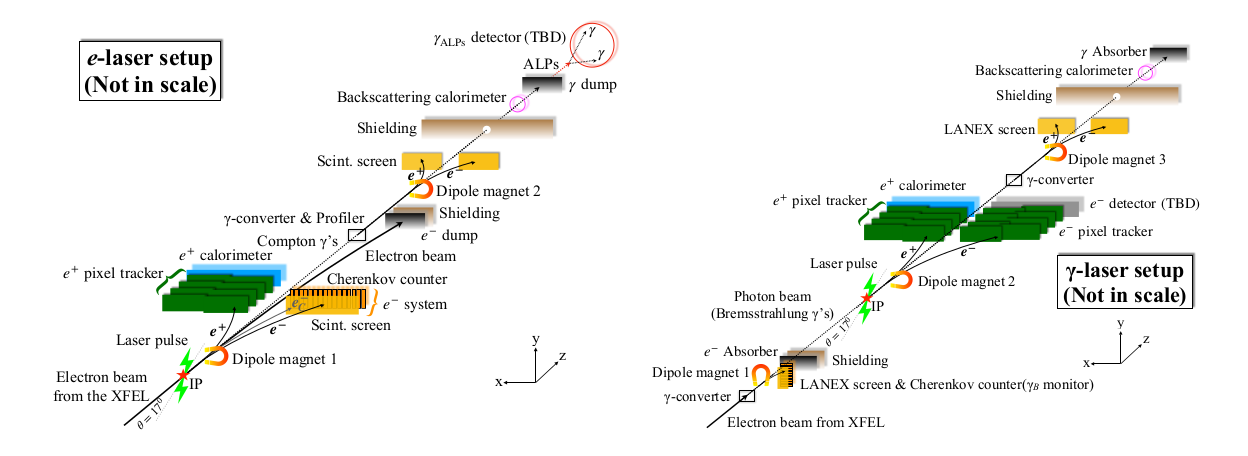
Highly Granular Calorimetry for LUXE
Exporting the high granular calorimetry ideas developed for future electron positron colliders to LUXE

The LUXE experiment will explore the uncharted territory of strong field quantum electrodynamics (SFQED) in e-laser and γ-laser interactions at an effective field strength at and above the Schwinger limit. In this regime, non-linear and non-pertubative effects are expected to appear in the production rates of electron-positron pairs. Hence, the number of electron-positron pairs and their energy distribution in e-laser and γ-laser interactions are key characteristics to probe SFQED. In the LUXE experiment the positrons originating from trident production in e-laser and from the Breit-Wheeler process γ-laser interactions will be measured in a detector system consisting of a tracker followed by an electromagnetic calorimeter, ECAL-P. The ECAL-P design is based on a technology for highly compact electromagnetic calorimeters which was developed by the FCAL collaboration, an R&D collaboration to design, build and test prototypes of luminometers for future linear electron-positron colliders, (ILC or CLIC). In the γ-laser setup, also the spectra of electrons originating from the Breit-Wheeler process will be measured. For that purpose, the same tracker as for positrons will be followed by ECAL-E, a silicon-tungsten electromagnetic calorimeter based on the technology developed by the CALICE collaboration. The highly granular ECAL-E is the reference design of the electromagnetic calorimeter for the International Large Detector (ILD) concept.
The tracker and both ECALs are located downstream of a dipole magnet which directs the positrons and electrons from the interaction point to the detectors. The correlation between the position and the energy of the positrons and electrons, determined by the dipole magnetic field, constitutes the basis for energy measurements in the tracker. By directly measuring the energy, the ECALs can determine whether more than one particle had almost the same path. Thus, the role of the ECALs is to determine, independently of the tracker, the number and energy spectra of electrons and positrons. The combination will provide an independent in situ energy calibration. In addition, it will ensure a good control of the beam-related background.
The AITANA group is involved in the design, optimization and test of the two calorimeters for LUXE.

to be updated



